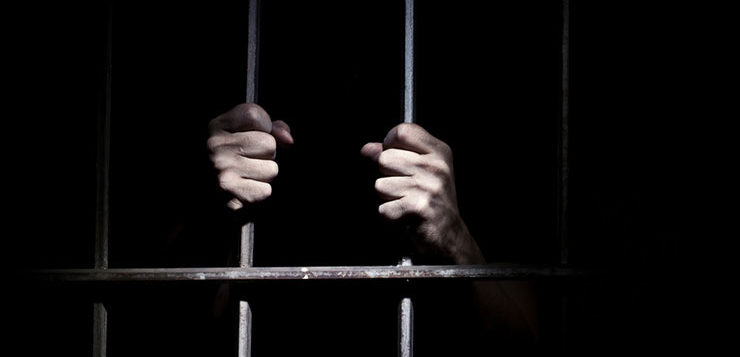The abuse of Aboriginal prisoners with disabilities in Australian jails is confronting, and ongoing. In a special feature for New Matilda (also published as a five-part series), Michael Brull explores the shocking revelations uncovered in a landmark report written by Human Rights Watch.
For years, there has been considerable evidence of the significant discrimination visited upon Aboriginal people with disabilities in the criminal justice system. Research into this important issue is developing, and is shocking. It should be a national scandal, akin to the Don Dale revelations.
In late 2011, media attention began to grow in relation to Marlon Noble. Marlon is an Aboriginal man who was imprisoned in Western Australia for 10 years for crimes there is no evidence he committed. The reason he was imprisoned that long is because the legal system provided for indefinite detention of people with mental disabilities, who were judged unfit to stand trial.
In 2012, a report by the Aboriginal Disability Justice Campaign (ADJC) explored the broader scale of the indefinite detention without trial of Aboriginal people. The ADJC found there were at least 30 Aboriginal people being detained without trial on this basis. This was based on their own research, as the government hasn’t provided statistics on this issue.
After news broke of the torture of Dylan Voller at Don Dale Youth Detention Centre, I spoke to Patrick McGee, the coordinator of the Aboriginal Disability Justice Campaign. He explained that a young Arrente man, “KA”, had a severe mental disability and was imprisoned after allegedly killing his uncle.
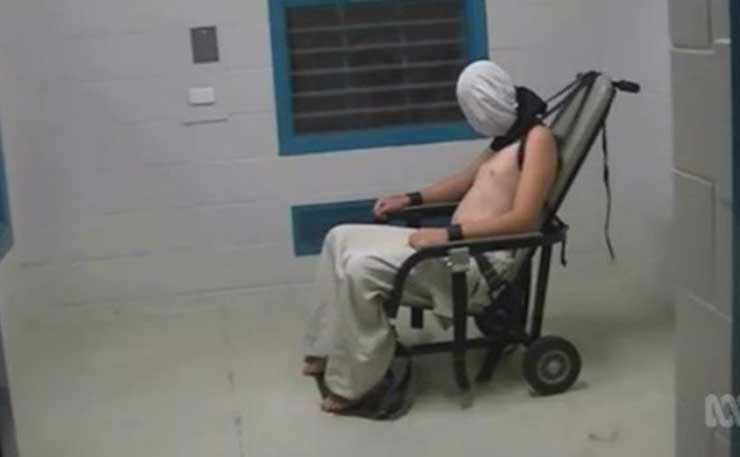
KA repeatedly banged his head against cell bars and walls. The prison responded by putting him in a restraint chair, and using chemical restraints on him. The prison doesn’t disclose to Patrick, the guardian of KA, when those restraints are used. He has to find out by carefully reading reports by the Department of Corrections submitted to the Northern Territory’s Supreme Court.
The restraint chair was used on KA at least 17 times from 2012-15. The longest period in the chair was for two and a half hours. Patrick strenuously opposes each use, and the prison ignores his objections. McGee argued that a maximum security prison was a totally inappropriate place for someone with a severe intellectual disability, which was not equipped to deal with KA’s complex needs.
It is in this context of growing awareness that the new Human Rights Watch report has emerged. Titled I Needed Help, Instead I Was Punished, it was researched and written by Kriti Sharma. Research and editing support was provided by other HRW staff.
The HRW team conducted 10 weeks of fieldwork in Queensland and Western Australia. Though they hoped to visit NSW prisons, the government ignored requests for cooperation, and didn’t facilitate access to NSW prisons. They interviewed 275 people, including 136 current or recently released prisoners with disabilities in the three states. 63 of those individuals were Aboriginal. They also interviewed prison staff, health workers, activists, academics, lawyers and others. They visited 14 prisons, and took pictures to illustrate their concerns about their conditions.
The resulting report, about the way people with disabilities are treated in prisons, is deeply harrowing. At the end of the report, HRW makes various recommendations. Like so many worthwhile reports in Aboriginal affairs, it is unlikely that most of their recommendations will be implemented, particularly without public pressure. Thus, I think their findings should be more widely disseminated.
Discrimination and over-imprisonment
The HRW report notes the imprisonment over-representation of both Aboriginal people, and people with disabilities. Aboriginal people make up around 3 per cent of the national population, but 28 per cent of those in prison. About 18 per cent of Australians have disabilities, but they comprise almost half of the prison population.
The over-representation of each group connects to the wider institutionalised discrimination each community faces. For example, “The lack of comprehensive mental health and social services has created a pathway to prison for various at-risk populations in Australia. Many people with disabilities encounter the criminal justice system because of the difficulty of identifying and recognizing a disability, of understanding the necessary related support, and of providing adequate community-based health and social services.”
For Aboriginal people, their over-imprisonment rate is “ … integrally linked to the social and economic disadvantages that result from years of structural discrimination”. The incredible increase in the Aboriginal and Torres Strait Islander prison population of 88 per cent since 2004 (versus 28 per cent for non-Indigenous prisoners) “reflects over-policing of Aboriginal and Torres Strait Islander people, the introduction of more punitive laws, and changes in the way the criminal justice system treats offenders — for example, a rise in the number of prisoners on remand, more punitive sentencing laws and practices, and limited availability of non-custodial sentencing options”.
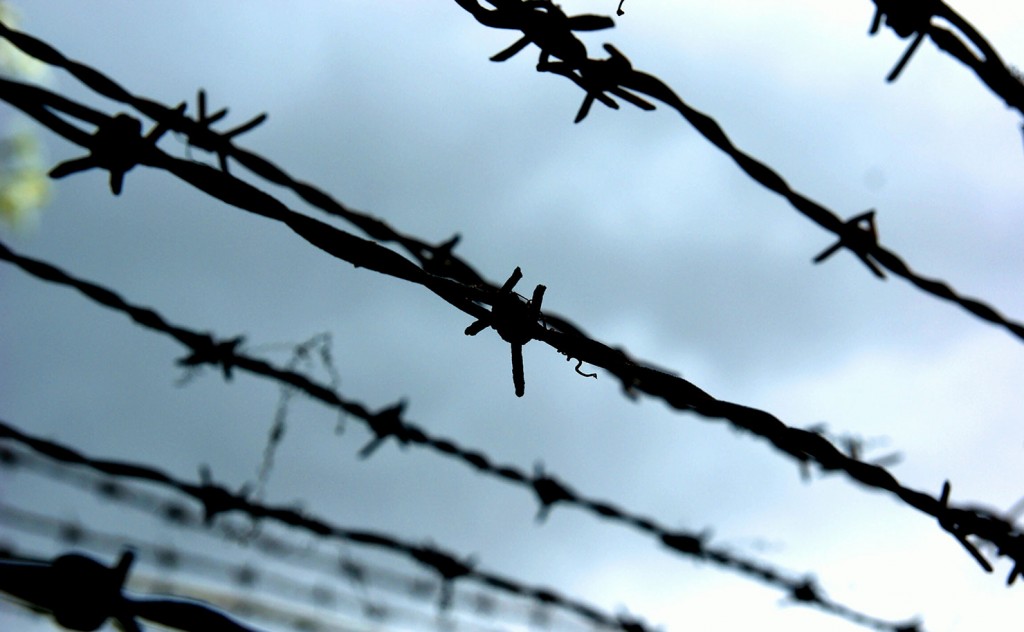
Research has found that almost half of Aboriginal and Torres Strait Islander people over 15 have a disability. But by the time “Aboriginal and Torres Strait Islander people encounter the criminal justice system, it is very likely that they have had a disability their entire lives with no real support or accommodation”. About 73 per cent of Aboriginal and Torres Strait Islander men in prison have a diagnosed mental health condition, whereas 86 per cent of women have a mental health condition. The rate could be higher, as many Aboriginal people may be reluctant to identify with a stigmatised condition.
The Australian Human Rights Commission has identified systemic barriers preventing access to justice for people with disabilities. These can include lack of community support to prevent violence and disadvantage, to lack of support in the bail process.
People with “mild cognitive disabilities” can face particular disadvantages, as they are not judged as worthy of disability related government services and support. People with disabilities can also be viewed by the judiciary and police as unreliable and untrustworthy.
HRW went on to review a 2015 report on the detention across Australia of people with disabilities without trial. They found that at least 100 were so detained, and at least 50 were Aboriginal or Torres Strait Islander people.
Bullying and abuse
The report then turns to the terrible bullying and abuse in prison. People with disabilities are particularly vulnerable, both to staff and other prisoners. They are often less capable of defending themselves, their complaints are regarded as less credible, and many prisoners are afraid of complaining about how they are treated due to fear of reprisals. This abuse can take the form of verbal, physical and sexual abuse.
HRW documented 32 cases of sexual violence and 41 cases of physical violence against prisoners with disabilities. These were perpetrated by fellow prisoners, or by prison staff. 15 of the victims of sexual abuse were female, 17 were against males.
Few reported their abuse, “due to shame or the fear of retaliation”. To give a sense of the scale, that makes some 23.5 per cent of prisoners and ex-prisoners interviewed stating they experienced sexual abuse, and some 30 per cent being subjected to physical abuse.
HRW also found evidence of systemic racial abuse. “In 11 out of 14 prisons,” they found “evidence of staff and prisoners expressing racism in language and behaviour towards Aboriginal and Torres Strait Islander prisoners. Racism in prison can manifest itself in many forms, such as name-calling, racial slurs, verbal abuse, harassment, biased treatment, and at times violence.”
Prisoners are also often subjected to abuse and insults for their disabilities. HRW found evidence of this in all the prisons visited. They found that “people with disabilities are repeatedly picked on, bullied, and harassed by other prisoners or prison staff due to their disability”. They “are seen as easy targets. Fellow prisoners mock and insult them, calling them a ‘spastic’ or ‘a waste of air.’ They are intimidated and blackmailed or cheated out of their cigarettes, food, or other belongings”.
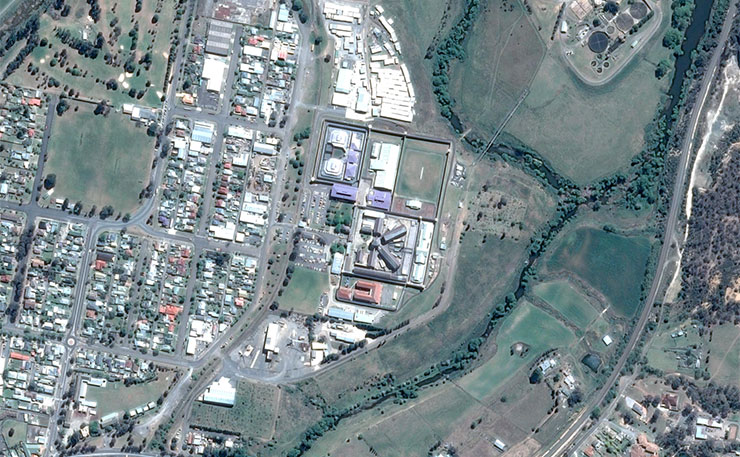
Prisoners with disabilities often require carers in prison. Prison staff respond with the cost-saving measure of making other prisoners their carers. HRW reports that, “Prison staff said they make every effort to choose prisoner-carers carefully to ensure they will genuinely care for the prisoner with the disability.” In practice, this is not always what happens, especially given that prisoners with disabilities become extremely vulnerable to abuse by the prison carer.
In one of many shocking passages, HRW writes that a “senior nurse in Queensland said that six of the eight current carers were convicted sex offenders”:
We had a case here where a prisoner with a disability was recently raped in custody by his carer [who had been previously convicted of a sex offence]. During a random cell search, officers found blood and faeces on his bedsheets. Only then he [prisoner with a disability]disclosed he was raped on numerous occasions, before that he was too scared.
The nurse thought this abuse “was happening ‘quite frequently,’ but that it was often not clear because men often do not tend to disclose such information freely. ‘At the end of the day at six o’clock,’ she said, ‘the prisoners are locked in here [all night]with their carers.’”
Due to this widespread abuse, “many prisoners with disabilities live in constant fear of others, in and out of cells, including during showers, meals, and recreation time. In overcrowded facilities, where people are forced to ‘double up’ in single cells, people with disabilities are often the targets of bullying.”
In Their Own Words
Many of the testimonials provided in the HRW report from those incarcerated are distressing. HRW protected the anonymity of all of those mentioned, but they’re worth re-visiting here to get a better sense of some of the abuses faced by disabled prisoners.
Sexual abuse
“I was going in to take a shower, and I saw three male prisoners. I sensed trouble and I started backing out. But one of them ran towards me…. The other two held me down and they made me kiss his penis. I tried to run away. [Tried] to get help and shout out to the prison guards. But they were too far. I could not do anything because I would be labeled a ‘dog’ [traitor].
When I finally managed to find someone to tell and the guards found out, they put me in the punishment unit. I was told it was for my safety. And there was nowhere else they could put me. And then the guards on call taunted me…. All night I could not sleep…. I could just hear the guards giggling outside. I had to wait for a couple of days before I was transferred to another prison. I am suffering from depression…. I get no support.”
— Man with cognitive disability
“I got hit on sexually by officers quite regularly, even though I’m old. Male predators work in that jail [a women’s prison]next to young vulnerable girls. They catch you when you’re working by yourself and touch your boobs, bum, or put a hand around your waist. Or they make stupid comments like, ‘You’ve been here a while, you must be horny.’”
— Woman with psycho-social disability
“[I] was sexually assaulted…. It happened in my room. He [the perpetrator]was my cellie. Afterwards, he told me to kill myself. So I cut myself.”
— Prisoner with a cognitive disability
“It was a few guys…. I know at least one of them raped me, but I kind of blacked out. I was bleeding, I still bleed sometimes. I reported it the same day to two of the superintendents, I filled out the medical request form. They told me if I report it, I would go to the DU [detention unit]for six months. So I ripped up the form in front of them…. Then when I went back to the unit, I got bashed up by some of the guys. Not the ones who assaulted me…. Someone came up behind me and stabbed me in the eye with a pen. They beat me up, stomped on me. Called me a dog [traitor]. “
— Prisoner with a cognitive disability
“if a woman is banging her head or smearing faeces on the wall, five or six male staff will come in, hold her down to restrain her, strip her naked, and deprive her from using any bathing facilities. They do this even with women with [a]well-documented history of sexual assault. They justify it as a safety measure but there are times where it happens when it’s not about safety. Officers get frustrated or annoyed with the person. But I don’t think we should be retraumatizing people and a lot of the time we do.”
— Psychiatrist working in prisons
[A staff member will say] ‘If you don’t give me a hand job or whatever, I’ll put you down for a loss of privileges [a prison charge resulting in loss of access to privileges], or will stop your visits.’
— Social worker
Physical abuse
“I got beaten up in the detention unit. I had played up the day before so they were trying to teach me a lesson. Four officers tackled me. The senior officer stood on my jaw while the other hit my head in and restrained me. They said, ‘You don’t run this prison little cunt, we do,’ and they cut my clothes off. They left me naked on the floor of the exercise yard for a couple of hours before giving me fresh clothes.”
— A male prisoner with a psychosocial disability
“Two to three years ago, I got bashed by the officers but they got away with it.”
— Woman with a cognitive disability
“If one of the girls is going through a psychotic episode, guards hold onto [a grudge]and as a result they are brutal. They would use fists, cuffs. They will lock her down for hours and hours and it can be 42 degrees Celsius (107 degrees Fahrenheit). No fan, no air conditioning, no water. They’ll [officers]bruise them [the prisoner]. They will strike them. Some are just on a power trip. They need to dominate.”
— A social worker working in a women’s prison told Human Rights Watch:
“Five officers came into my cell. They put me in the shower. They said ‘Beat your head up the wall, or we’ll do it for you.’ I became dazed, didn’t recognize or remember their faces. They took me to a medical room at night, with no medical staff. One said, ‘I’m going to hit you, be ready to block.’ They blocked my face in the chest, [I] got hit in the ribs. […] He took me down the back [punishment unit]. I thought I would die and become another death in custody. I’ve never reported it.”
— A man with a psychosocial disability
Verbal, ableist and racist abuse
“[An officer told me]: ‘Why are you still living? It’s time you die.’ Officers are supposed to help us, not treat us like rubbish and run us down.”
— Man with a psychosocial disability
“Officers make jokes about me [and my disability]:” ‘You’re a lazy so-and-so.’ Officers tell me, ‘You’re an asshole.’ It makes me feel bad.”
— Man with a disability
“‘Look at this idiot, look at this looper,’ they [fellow prisoners]would say. It’s quite demeaning to someone’s mental health….. like wolves attacking an injured lamb.”
— Prisoner with a psychosocial disability
“If you say something back to them [officers], they charge you with swearing. (…). Some officers are racist: [they call us]‘black cunt,’ ‘sheep,’ ‘mother fucker’ or ‘pricks.’”
— Aboriginal prisoner
“[Prisoners would] rather sit back and be sick rather than go see a nurse because the nurse would say ‘Go away, you’re exaggerating.’ That happens quite a bit. They think they’re drug seekers…. We need more aboriginal staff [so prisoners feel comfortable seeking services]. […] Racism is alive and well… It manifests itself in stereotyping: aboriginal prisoners are all drug addicts, all involved in domestic violence, all are drug-seeking or untruthful. […] If they question the nurse saying they had an allergic reaction, she will say: ‘You fucking black cunt, you don’t know what you’re talking about. I’m the nurse here. Sit down, shut up, and take your meds.’ A lot of the nurses are very harsh with their comments, swearing, belittling them.”
— Aboriginal cultural liaison officer
Bullying and harassment
“Officers try to bully us. They will ask us to clean the unit, even though it would have already been cleaned but they will make us do it again and again. Aboriginal prisoners get bullied more than others.”
— Aboriginal prisoner with a psychosocial disability
“[There are some] old school officers…. They’d do things like ‘mark the doors’ – the guys who were smart-asses or talked back. They would do dehumanizing things like strip them naked and leave them outside standing up.”
—An Aboriginal prisoner
“Ever since I lost my leg, I [have]felt very vulnerable. [Other prisoners] want your smokes [cigarettes], and harass you for money. [They tell you]: ‘I know you’ve got smokes.’ They watch you…”
—Man with a physical disability
“The officers don’t know half of what is going on in here…. I feel very vulnerable in here. I have had my [wheel]chair taken away from me by other prisoners [for not giving into their demands]”
— Male prisoner with a physical disability
“Four blokes were on me, trying to get my meds. It was pretty brutal. If you don’t spit the med out, they will say, ‘We know you can do it. Why aren’t you getting it out for us?’ And if you don’t get it out next time, you have got to fight them. It can happen in the laundry or toilets, you can get three to four blokes on you at once and in just a couple of minutes, they’ve bashed you. By the time the officers come, it’s too late.”
— Man with a psychosocial disability
“When you’ve got trouble, you don’t go to officers [to]ask for help. That’s the golden rule in jail. You get called a ‘dog’ [traitor]. You could get bashed.”
— Male prisoner with a psychosocial disability
“I get bullied by some prisoners. They ask for smokes [cigarettes]but if I say, ‘No,’ they fight with me. I’m an easy target because of mental illness. If we get caught fighting, they will tell the officer, ‘She hit first because the voices told her.’”
— Aboriginal woman with a psychosocial disability
The Cruelty Of Solitary Confinement
Human Rights Watch (HRW) observes that under international law, solitary confinement means confining a prisoner for 22 hours or more per day “without meaningful human contact”. Prolonged solitary confinement occurs when solitary confinement is extended past 15 consecutive days.
HRW documents in its report that various specialists on international law from various United Nations human rights organisations have found that under international law, it is unacceptable to impose solitary confinement on people with disabilities under any circumstances.
As noted by HRW, Juan Mendez, the United Nations special rapporteur on torture, argued that “the imposition of solitary confinement ‘of any duration, on persons with mental disabilities is cruel, inhuman or degrading treatment.’ He has called on governments to abolish it for prisoners with psychosocial or cognitive disabilities”. Mendez observed that “the longer the duration of solitary confinement or the greater the uncertainty regarding the length of time, the greater the risk of serious and irreparable harm to the inmate that may constitute cruel, inhuman or degrading treatment or punishment or even torture”.
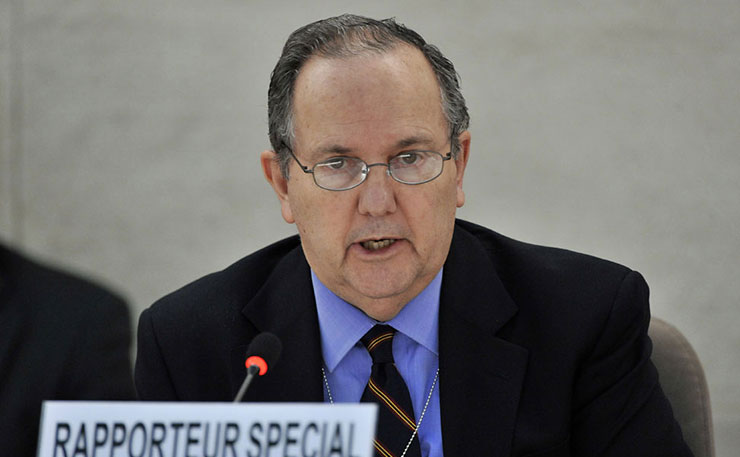
Likewise, the UN Subcommittee on Prevention of Torture and Other Cruel, Inhuman or Degrading Treatment or Punishment has said that “prolonged solitary confinement may amount to an act of torture and other cruel, inhuman or degrading treatment or punishment and recommended that solitary confinement should not be used in the case of minors or the mentally disabled”. Rule 45 of the United Nations Standard Minimum Rules for the Treatment of Prisoners provides that the “imposition of solitary confinement should be prohibited in the case of prisoners with mental or physical disabilities when their conditions would be exacerbated by such measures”.
How solitary confinement is used in Australian prisons
HRW was only able to visit prisons in Queensland and Western Australia, due to the NSW government’s failure to cooperate with their investigation. HRW observed that the WA and Queensland governments didn’t use the term solitary confinement to refer to their practices, preferring “euphemisms such as ‘segregation’ or ‘separate confinement’. However, the use of solitary confinement is extensive and systematic.
The first thing to stress about the use of solitary confinement in Australian prisons is that its use is extremely common. HRW observed: “Across prisons visited, crisis, safe, or observation cells were almost always full due to the alarmingly high number of prisoners who were self-harming or on suicide watch. In fact, due to a shortage of appropriate cells and overcrowding, prison staff often use punishment cells located in detention units for observation.”
A psychiatrist interviewed by HRW observed that, “staff resort too readily to solitary confinement and there’s a lack of investment in training and in alternative strategies. Even the Office of the Chief Psychiatrist recognizes it’s [solitary confinement]traumatic and psychologically harmful”.
Solitary confinement is not just used for a few hours, but for extended stretches. HRW found that “prisoners can spend months and at times years in prolonged solitary confinement”, noting the case where one man “with a psychosocial disability has spent about 19 years (with a 3-week interval)” in solitary confinement.
Solitary confinement is used for a variety of reasons. They are used “to punish, manage, protect, or ostensibly treat prisoners. Human Rights Watch found that prisoners with psychosocial or cognitive disabilities are disproportionately represented in all solitary confinement regimes (maximum security units, detention or punishment units, and crisis, observation, or safe units) across the 14 prisons visited”.
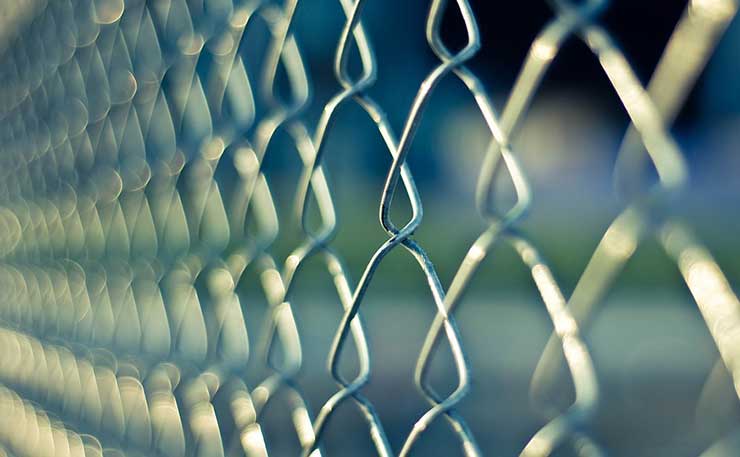
The reason is relatively straightforward. People with disabilities can often require particular support, and have special needs that prisons are not equipped to provide for, and which guards are not trained to engage with. Such behaviour is often treated as acting out. For prisoners who cannot fit easily into prison life, solitary confinement is a way to control prisoners who are less responsive to other forms of coercive measures to enforce behavioural norms.
Prisoners held in solitary confinement spend 22 hours or more each day in a small cell, “sealed with solid doors”. They “lack opportunities for meaningful social interaction with other prisoners; most contact with prison and health staff is perfunctory and may be wordless (such as when meals are delivered through a slot in the cell door)”. They are allowed a maximum of two hours of exercise in a “fully caged, concrete exercise yard”. They “often have very limited or no access to educational and recreational activities or other mental stimulation, and are usually handcuffed and escorted by correctional officers when they leave their cells”.
HRW explains that prisoners in Maximum Security Units (MSUs) “have no contact with other prisoners, not even in corridors or in the exercise yard. MSU cells are double-doored so prisoners cannot see any human activity outside their cells. They are allowed to meet visitors but they are strictly ‘no contact’ which means they are separated by a glass window and cannot have any physical contact”.
There are three primary solitary confinement regimes. These are MSUs, detention/punishment units, and crisis/observation/safety units. MSUs are part of a Queensland regime for prisoners who may escape, harm or kill someone, or if they pose a significant threat to the “security and good order” of the prison. Prisoners under this program are sent to one of two facilities, which have 38 beds between them. The order is for three or six months, but can be prolonged indefinitely.
HRW observed 22 cases of MSU prisoners: 15 had identified psychosocial or cognitive disabilities. At least five were Aboriginal or Torres Strait Islander people with disabilities. A psychologist agreed that a “large proportion” of MSU prisoners “have mental health issues”, and some “have been in there for years”. Sometimes they are “punished for behaviour related to their disability”.
There was a time when people displaying “acutely suicidal or self-harm behaviour” couldn’t be sent to MSU. From September 2017, they can.
Safety units are theoretically to protect prisoners who might harm themselves. As noted previously, they are “almost always full” due to high levels of self-harming prisoners. Theoretically, they’re supposedly there so that prisons can care for possibly suicidal inmates. HRW found that these cells “are sometimes no different in appearance from detention or punishment cells… Most prisoners whom Human Rights Watch interviewed found the environment highly debilitating.” HRW found “at least three cases” of women who were held in “windowless, perpetually lit, padded cells for several consecutive days, and in one case for over a month”.
There is little regard for the mental health needs of prisoners. HRW “found that mental health services and support in solitary confinement units consist largely of distributing medication through a slot in the cell door. Human Rights Watch observed that interactions between staff and prisoners are perfunctory, often restricted to a single question such as, ‘How are you doing?’ and conducted through closed cell doors, allowing for the response to be heard across the unit, including by prison guards”.
How solitary confinement harms
HRW explains that “isolation can be psychologically damaging to any prisoner causing anxiety, depression, anger, obsessive thoughts, paranoia, and psychosis. Its effects can be particularly detrimental for people with psychosocial or cognitive disabilities”.
“[The] stress of a closed and heavily monitored environment, absence of meaningful social contact, and lack of activity can exacerbate mental health conditions and have long-term adverse effects on the mental well-being of people with psychosocial or cognitive disabilities.”
In “most” cases HRW documented, people with disabilities “said their psychological condition deteriorated after spending time in the sterile and isolating environment of solitary confinement units”. Prisoners with disabilities who were recently released from the MSU “told Human Rights Watch they had difficulty speaking and interacting with others after leaving because they had been deprived of any social contact during their time in the MSU”.
Sharon Shalev, an academic specialist on solitary confinement at Oxford found that “conditions of extreme social isolation and reduced environmental stimulation (in solitary confinement) inflict psychological trauma and in some cases deprive inmates of sanity itself”.
The Royal Commission into Aboriginal Deaths in Custody also commented on solitary confinement. HRW notes that it found that “solitary confinement has a particularly detrimental impact on Aboriginal and Torres Strait Islander prisoners, many of whom are already separated from family, kin, and community. The report found that solitary confinement causes ‘extreme anxiety’ and can induce self-harm.
Observers comment on the effects of solitary confinement
A psychiatrist described the condition of a prisoner with a psychosocial disability who has spent over six years in solitary confinement:
“He is plagued with near pervasive feelings of anxiety, hopelessness and depression at his predicament…. He often contemplates suicide. There can be little doubt that psychological harm will continue to be experienced. He is likely to deteriorate further, the longer he remains.”
A lawyer who has worked with prisoners in MSU for six years said:
“I often witnessed a significant deterioration in the mental health of the prisoners I visited between those six-week periods. They would describe experiences such as talking to themselves, hallucinating, and extreme difficulties coping with minor changes to their routine. For those who had spent years in solitary, they expressed fear at leaving the environment to which they had become so accustomed. When I suggested prisoners in the MSU speak to counsellors or psychologists about these difficulties, they expressed mistrust of correctional staff and felt what they said would be used against them to justify their ongoing detention in the MSU.”
A senior psychologist working in a women’s prison observed that:
“The unit is designed to keep prisoners safe, especially from themselves, and it isn’t therapeutic, it’s confronting and it can be really traumatizing. And while we do our best, it’s just not the right environment for people with mental health concerns, or cognitive impairments.”
Another psychiatrist explained that solitary confinement:
“has a massive impact on mental health. I have had patients start getting psychotic symptoms and sensory deprivation simply because they have been in the detention unit for too long. They start getting depressed and paranoid. They are already traumatized and when you leave them there for weeks and months, they get worse. They end up on robust medicine regimes. The whole system is misunderstanding people’s needs. The attitude of corrective services staff is that the prisoners aren’t here to receive care but to be punished.”
Prisoners on the experience of solitary confinement
A prisoner with a psychosocial disability who was held in solitary confinement for several months explained:
“The MSU is very quiet, very isolating. There is no interaction in the MSU; you don’t see or hear anyone. They don’t give you stuff to do. I would only come out of my cell once a week. You feel like shit in the MSU; you just try to hold onto your sanity. It’s a relief to be out. They should have a reintegration unit to help you to start talking to people again.”
An Aboriginal prisoner with a psychosocial disability said, “Those three days were the longest of my life. It’s claustrophobic, lonely, boring. My depression went through the roof. I punched and head butted a wall. Makes you do stupid things.”
A prisoner with a psychosocial disability described the Detention Unit (DU) solitary confinement as “hell on earth.” He said it’s “humiliating”, and “Makes your head go stupid.”
A prisoner with a psychosocial disability said:
“The staff terrorize people in the DU. ‘Heel, dog, heel,’ they said to me…. I was sobbing, they didn’t respond. They opened up the grate [in the cell door]and laughed at me. I swallowed batteries in front of them. [One officer] spat in my face. He said I will punch your teeth all over the cell. Seven other officers were there. They said I was being disruptive. I cut my wrists open. They did nothing, just sat on the bed. [Later] they took me to hospital. I fought with them, I didn’t want it [to go]. I was handcuffed and my feet were shackled. I was in extraordinary pain. I started playing up…. I needed to talk to someone but they ignored me.”
An Aboriginal man with a psychosocial disability said “I have been in the SU two or three times for self-harm… I needed help, instead I was punished.”
Another said:
“My son died a month-and-a-half ago, [so]they sent me to the safety unit. I didn’t self-harm before going to the SU [Safety Unit], though I have in the past. The safe[ty]unit isn’t good. The lights in there are on all the time — 24 hours. It drives you crazy those lights…. They make you stew on your problems.”
Likewise, another Aboriginal man with a psychosocial disability who was raped in prison was sent to “safety” solitary confinement cells for significant amounts of time. He said:
“I am locked in a room with nothing but my thoughts, all I do is think and 90 per cent of the time it isn’t good. I feel hopeless; life isn’t worth living and I’d be happier if I was dead. It has led me to self-harm; the physical pain doesn’t hurt as much as the emotional pain. My self-harm increased after the rape. I put razor blades and glass in my penis. I wouldn’t do this if I had activities and therapeutic interventions. I have seen the psych twice in four months and it wasn’t meaningful.”
A man with a psychosocial disability who spent what HRW said was a considerable time in a safety unit said: “I’ve tried to hang myself here and they couldn’t get a counsellor to see me. It was over the weekend and their excuse was there were no psychs between Friday and Monday. They only come for risk assessments.”
Another man with a psychosocial disability who has spent “considerable time” in a safety unit said:
“I have been in the padded cell so often, I can’t even count how many times. They use the padded cell as punishment here. One guy rubs poo on himself so they put him in the padded cell. They put you in a body belt and cuffs but take them off when you calm down. The padded cell has no window. The light stays on which drives me insane. You don’t know the time of day or direction: it’s disorienting.”
Case study: Jack
Jack, a prisoner with a cognitive and psychosocial disability spent several months in an MSU in Queensland, prompting a severe deterioration of his mental well-being. He started having panic attacks regularly, but instead of providing psychosocial support, the prison officers did not believe he had a disability. They thought it was an act and would bend back his fingers, stand on his feet with their boots, and twist his handcuffs. They told him, “You better get out of here soon because it is just going to get worse.”
When the officers continued to torment him, Jack said he tried to commit suicide. Four months into his MSO, corrective services organised a psychological assessment. The psychologist determined that Jack’s risk of violence was rooted in the “vulnerabilities associated with [his disability]and a history of trauma with the prison environment” and confining him to the MSU would only be damaging, stripping him of coping skills and “making his future integration more challenging”. Instead he recommended reintegrating Jack into a mainstream unit, which was done three months later.
Case study: Mary:
“Mary, a prisoner with a psychosocial disability, was put in solitary confinement within the health centre of a prison for 28 days, following a drug charge. Her cell had no power or running water. Despite legislative requirements that a prisoner have access to a minimum of two hours’ exercise in the fresh air each day, Mary said she was not permitted to access the exercise yard for her first seven days in the health centre. She was also denied access to phone calls and could not send or receive mail.
After the first week in solitary confinement Mary was granted access to daily exercise. However, she was placed in handcuffs connected to a body belt, restricting her movement. Mary said that correctional officers mocked her during exercise time, whistling at her like a dog and telling her to crawl on her hands and knees. During her time in solitary confinement, Mary did not have access to a toilet and was forced to use cardboard urine test containers. Mary said occasionally correctional officers failed to empty the containers and she would have to leave them in the corner of her cell. She was not given any eating utensils when eating food and the lack of running water meant she struggled to stay clean. Mary describes the conditions as “putrid.”
Mary felt that she was “going crazy”. By the end of her time there, she said she was talking to herself in a constant “internal dialogue”. Mary did not have access to support or mental health services while in the health centre.”
Overcrowding, No Medical Treatment, No Accessibility
“I have to wear a nappy every day. I don’t feel like a man; I feel like my dignity is taken away. I can’t use the shower without a carer. Last Saturday, I needed a shower and it lead to an argument with the officer because he refused [to help me]. He mocked: ‘Poor me, poor me, guy in wheelchair’ and downgraded me wickedly.” – Aboriginal prisoner quoted in the HRW report.
The sadistic way Aboriginal people with disabilities are treated (part 1 and 2) in prison could be reformed and limited with basic reforms and proper training. Solitary confinement is used at least in part because prisons and prison guards are not equipped to deal with people with disabilities, though the criminal justice system has effectively criminalised many of them.
But what is important to stress is that a great deal of the problems ultimately stem from systemic underfunding of prisons. They are not funded in a way that allows them to properly care for the people they incarcerate. Many members of the public probably regard this with an indifferent shrug, whilst some would presumably feel a vengeful satisfaction at criminals getting what they deserve.
The result of this underfunding is major overcrowding. It is lack of accessibility for the diverse and sometimes complex needs of people with disabilities. It is the lack of medical services for people who need medical care. And it is staff who are under-trained, who are expected to control the inmates in overflowing prisons, rather than treating them humanely. Able-bodied and healthy prisoners may be able to cope with prison guards being inconsiderate, abusive, and worse. For people with disabilities, the results can range from humiliating, to dangerous.
Overcrowding
Across Australia, there have been longstanding reports of overcrowding in prisons. The Human Rights Watch (HRW) report traces this, and its particularly harsh impact on Aboriginal people with disabilities (I should also note that I have edited Americanised spelling in quotes below).
HRW observes overcrowding can be attributed to “a range of factors — including changes in laws on sentencing, bail, and parole; a tougher crime policy by state governments and courts; and a shortage of beds in specialized facilities”.
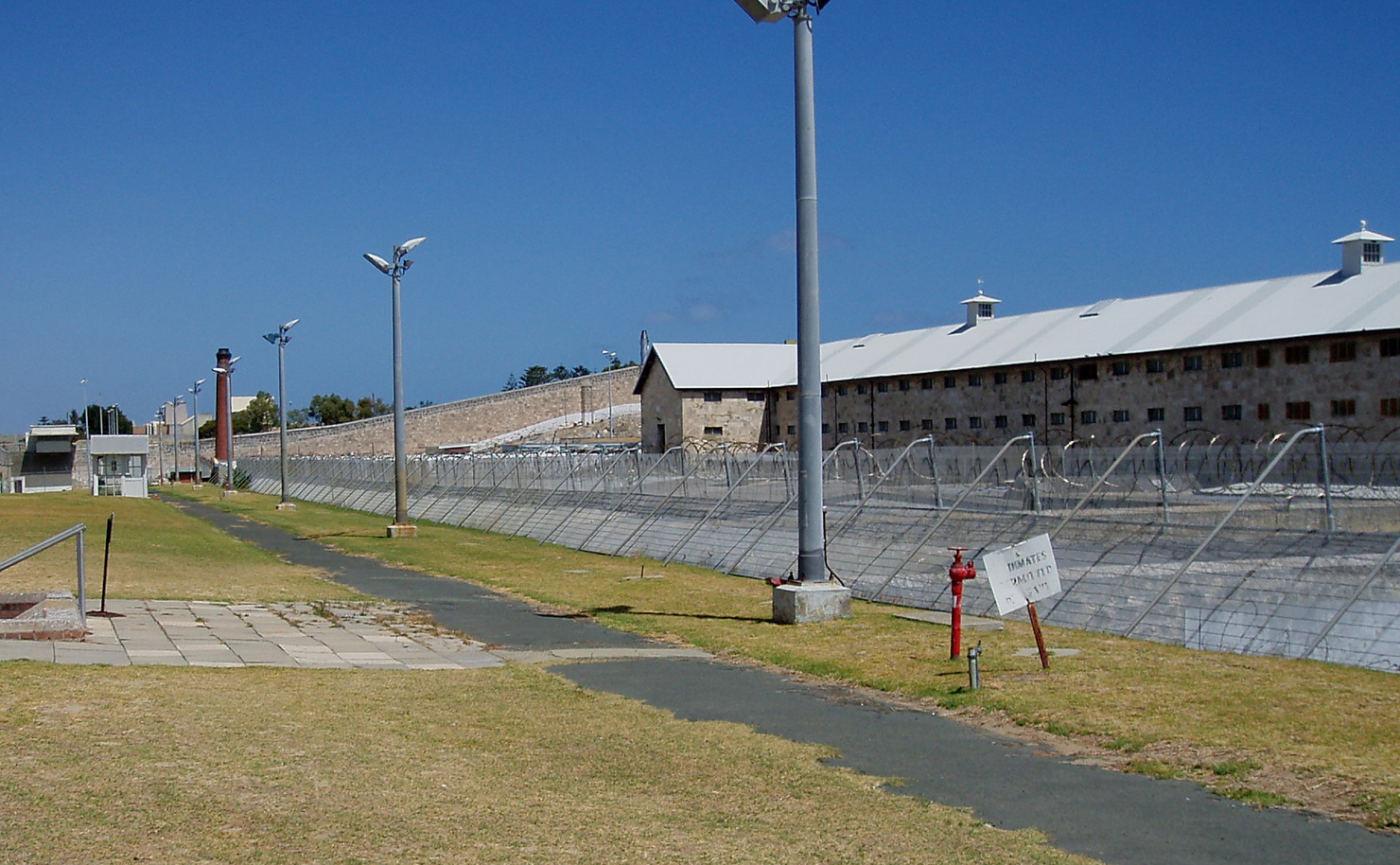
Western Australia’s prisons function “at 150 per cent capacity and more than two-thirds of the state’s prisoner population is kept in cells that are too small, according to Western Australia Inspector of Custodial Services, Professor Neil Morgan”. Queensland’s facilities are supposed to hold up to 5,600 prisoners, but instead held 8,477 last year. NSW held over 13,000, despite a capacity for 11,000. HRW visited 14 prisons, and the “vast majority were overcrowded. In nine, people were often forced to ‘double-up,’ with two and sometimes three people confined in a cell originally built for one person”. Remember that prisoners with disabilities are particularly at risk of being sexually assaulted by other prisoners, and this makes them more vulnerable.
“Doubling up” can make prisoners particularly vulnerable to bullying from other prisoners. In already crowded prison cells, prisoners may have limited patience for psycho-social disorders of people they live in close proximity with. One such Aboriginal man explained, “I was not allowed to make poo in cell [after lockdown]. (…). Cell mates [asked me to]stop coughing in the morning. [One of them] got wild at me for making a noise(…). Nobody ever wants me in the unit. I get kicked out of my cell because I am unhygienic. We [people with disabilities]are picked on the most because we are the most vulnerable.” One man with a psychosocial disability was forced to share a cell with a prisoner who had been harassing him, causing him panic and anxiety.
The guards accept that overcrowding limits their capacity to provide proper care for people with disabilities. One female prison officer said, “Managing prisoners with disabilities is the biggest challenge we have…. We are not equipped or trained for it…. Because of overcrowding, we can’t give prisoners one-on-one attention.”
A female prisoner with a psychosocial disability had a different gloss on the general situation: “Due to the overcrowding, there is often friction among inmates and officers. Officers are shocking. If you ask something, they just ask you to ‘fuck off’.”
Overcrowding can also have a negative effect on conditions in cells. It can reduce the privacy, particularly when they share toilets. This can also exacerbate unsanitary conditions, which heighten tensions within cells. Overcrowding can also stretch the limited capacity for prisons to provide care for their prisoners. For example, if a prison has a few specialists to care for a large population, the wait gets longer as the prison becomes more overcrowded, without accompanying investment in care for those imprisoned.
Something I found particularly upsetting is how people are treated with limited bowel control (more on this in the next section). Due to overcrowding, prisoners are “constantly moved from one prison to another”, in search of a less crowded facility. Prisoners wound up:
“enduring hours of transport, locked at the back of a moving truck with no access to a toilet. For people with disabilities who may not always be in control of their bowel movements, this is particularly distressing. Lawyers told Human Rights Watch about people with disabilities who urinated or defecated in the truck during transport because they had no other choice and were beaten by fellow prisoners who had to bear the smell of urine or faeces for hours.”
Able-ism: lack of accessibility for people with disabilities
HRW documents that the prisons are not accessible for people with physical or sensory disabilities. The results are terrible, and show a shocking lack of regard for the basic dignity of prisoners. HRW writes that:
“In 9 out of 14 prisons, Human Rights Watch interviewed prisoners who had difficulty accessing basic services such as toilets, showers, kitchens, or bathrooms because the physical infrastructure was not accessible. As a result, simple tasks, such as going to the toilet or getting into bed become painful and humiliating for prisoners with physical or sensory disabilities.”
For example, there are people who walk with canes, or use wheelchairs, who simply can’t get around prisons that disregard their mobility needs. One man “with a physical disability using a cane had to struggle uphill to the medical centre twice daily to collect medication, a walk that took him 40 minutes due to his disability”. There was a hospital buggy, but due to regulations they couldn’t use it to pick him up. After repeatedly requesting a transfer, he wound up smashing some windows so that he could be transferred to a higher security prison, in the hope it would be more accessible.
Another man with a physical disability said, “Prison is not good for people like me… in a wheelchair. Beds are really low. It is a struggle to get into (…) bathrooms, and toilets are hard to use. Nothing is set up for a person in a wheelchair.”
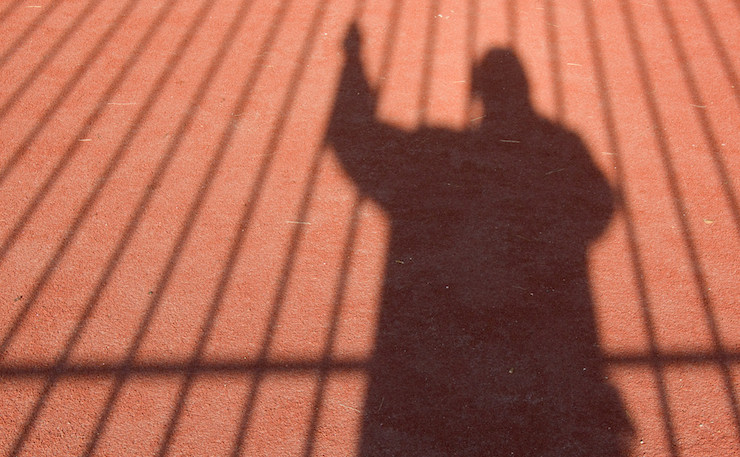
Another person in a wheelchair struggled with routine counts of prisoners, as “I have to get up and go out and stand at my door. [It is hard] getting in and out of your room because the big doors in the unit are heavy. It’s really hard to push and open it [the door]”. The struggle with basic infrastructure means prisoners “are often forced to seek help from fellow prisoners, which can mean handing over food or other belongings in payment or as thanks.”
What I found the most upsetting part of the report was the degrading lack of accessibility provided to people with particular needs relating to bathroom use. HRW observed that, “Due to the inaccessibility of sanitation facilities, staff and prisoners with disabilities in 9 prisons told Human Rights Watch that they had to either wait, or else shower, urinate, or defecate in humiliating conditions.”
As one example, in
“one prison there is only one accessible toilet and shower in the entire 1,000 bed facility. Since both are located in the infirmary, people with physical disabilities who live in the regular cell blocks have to get permission from staff each time they need to go to the toilet because it requires them to exit their unit and wheel themselves, sometimes over 100 to 150 metres away. They then often have to wait in line.
Since prisoners are not allowed to move around during ‘lockdown’ (when units are sealed to count prisoners or for security reasons at night), prisoners with physical disabilities are forced to wait — sometimes hours — for a toilet, or must wear nappies or urinate in bottles in their cells at night. An Aboriginal man with a physical disability who uses a wheelchair said: ‘Toilets are not accessible, I can’t get my chair in. I have to pee in a bottle.’
The report goes on to describe another “prisoner who also uses a wheelchair and cannot move on his own”, who said “I stayed in the medical unit because they didn’t really have anywhere for prisoners who are disabled. I had diarrhoea and I [was]lying in my own shit, because they are like, ‘You have to wait.’ The staff weren’t interested [in helping me].”
There is also a lack of shower chairs for people with physical disabilities. Again, partially due to overcrowding and underinvestment, “people have to wait hours to use one, must use their own wheelchair, or in some cases go without showers”. In one appalling case, a man said:
“I have to wear a nappy every day. I don’t feel like a man; I feel like my dignity is taken away. I can’t use the shower without a carer. Last Saturday, I needed a shower and it lead to an argument with the officer because he refused [to help me]. He mocked: ‘Poor me, poor me, guy in wheelchair’ and downgraded me wickedly.”
There are also lack of provisions for people with speech and hearing impairments. Of 14 prisons visited, three had “proper provision for deaf prisoners to communicate with their families over video calls”. Otherwise, miscommunications between deaf or mute prisoners and staff “results in misunderstandings, increases in prisoners feeling isolated, and undermines their ability to maintain family ties that will help them reintegrate into the community after release from prison.”
The Need For Large-Scale Change
Lack of medical care
HRW observed: “All prisoners face delayed or inadequate access to health care due to overcrowding. Prisoners with disabilities, however, face particular barriers accessing specialized services due to lack of proper diagnoses, long waiting lists, negative staff attitudes, and lack of resources.” “Impossibly large caseloads” prevent mental health professionals from providing appropriate care for prisoners, who often have complex needs. Furthermore, “Mental health staff often fail to discuss with prisoners the nature, purpose, risks, and benefits of different types of treatment so that the prisoner is not in a position to make informed decisions on whether or not to consent to the treatment. The effectiveness of their work is also often impeded by antagonistic relations between prisoners and prison staff.”
The difficulties begin with the admission process. When prisoners are taken into prison, “staff do not have the time, training, or tools to effectively identify people with disabilities and their support needs. Both the Western Australia and Queensland Departments of Corrective Services said staff receive initial training on disability and mental health, but there is no specific refresher or on-going training required or provided”.
As staff do not identify the disabilities and needs of prisoners, “prisons fail to provide appropriate and adequate services and accommodations for the particular needs of prisoners with disabilities.” Prisons in “Western Australia and Queensland were not consistently assessing or collecting data on disability” (NSW may be exempt, due to the government refusing to cooperate with HRW). A WA prison nurse said, “There is no disability assessment here. We don’t have time, we don’t have the facilities, and we don’t have the nursing staff. Prison is not set up for people with disabilities.”
A psychiatric nurse observed, “People with disabilities get lost in bigger prisons. If you’re not screaming or kicking, and if your disability isn’t visible, you’re under the radar.”
Once prisoners are admitted, the problem advances to a simple lack of investment in psychiatric and medical staff to support prisoners.
“Human Rights Watch found that prisoners with psychosocial disabilities can wait weeks and sometimes months to see a psychiatrist in Western Australia and Queensland respectively. According to a 2015 report by J.R. Paget, the Inspector of Custodial Services, in New South Wales, the average waiting time to see a primary health nurse was 28 days across correctional centres and over a month to see a doctor. However, the average waiting time to see a psychiatric nurse was 27 days and 42 days to see a psychiatrist. For a bed in a forensic hospital, a prisoner in New South Wales can wait up to 99 days on average.”
A prison officer in WA said, “We desperately need a mental health unit and a proper level of care. Some of these people should not be here. They need proper care.”
The way long-term and complex needs are met is grossly inadequate. Effort is more narrowly focused on what is considered urgent. A woman with a psychosocial disability said, “When lights are turned down, I am not allowed to press the button for Panadol because it is not ‘a medical emergency.’ To them, a medical emergency is a matter of life or death.”
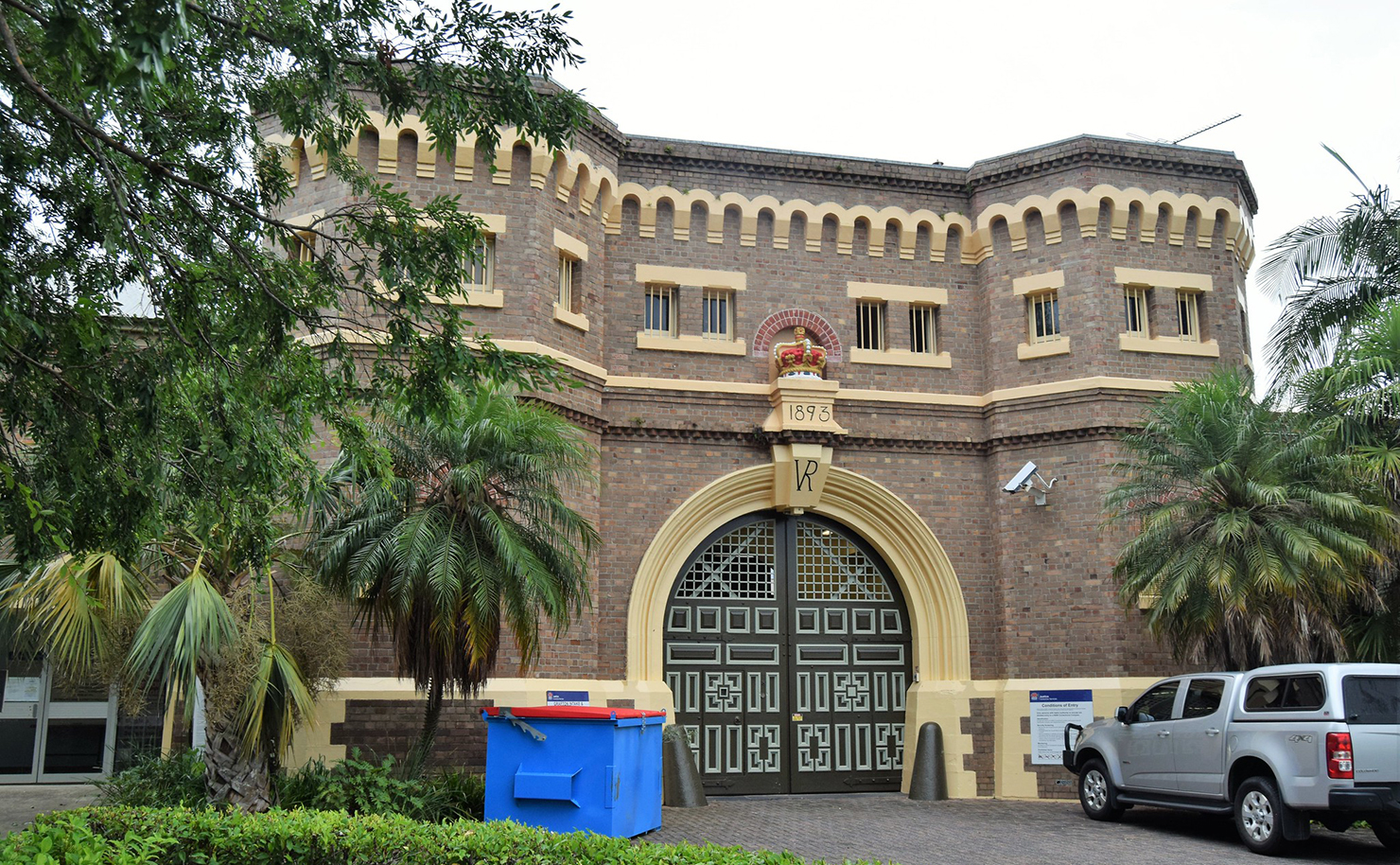
The lack of investment is a crucial part of the lack of care. In WA, “fewer than three full-time psychiatrists rotate between the 17 adult prisons.” One prison staffer explained, “It takes weeks and weeks to be seen [by medical staff]and you’re not even seen by a doctor, but a nurse. Unless a guard likes you and pushes [the medical request]through the system, you don’t get seen.”
The lack of funding also plays a direct role in the kind of care provided. HRW writes that, “People with disabilities may also be refused treatment because of the financial burden on prison administration.” One such prisoner said he was told by his physiotherapist that, “There is nothing I can do for you. This is a budget issue. I can’t keep sending people to the hospital; the ambulance costs $1000.”
As for specialised facilities, these are also grossly inadequate. In WA, there is a single 37-bed facility, to provide for over 6,500 prisoners. Even when admitted, a prisoner “could be sent back to prison before clinically indicated because the waiting lists are long and a prisoner on a court order or in a more critical state will be prioritized”
Lack of training, and staff prejudice
Among staff, the primary issues are prejudice and abusive behaviour, and a lack of training for people with disabilities (which, as noted, aren’t properly identified upon entry). HRW explains that:
“In a prison environment that is punitive and fails to accommodate a person’s disability, prisoners with disabilities often struggle to cope and their resulting behaviour is misunderstood by staff. Prison staff acknowledge that people with disabilities can be overrepresented in detention units and that they are not adequately trained on disability and mental health to distinguish between a conduct that stems from the disability or a mental health crisis and one of defiance.
Instead of providing psychosocial support and accommodations for a person’s disability, prison staff can reprimand or punish the prisoner for behaviour that is perceived as ‘disruptive,’ ‘disobedient,’ or ‘acting up.’ Human Rights Watch documented cases of people being sent to a punishment unit after experiencing anxiety or a crisis that medical staff did not manage on time.”
A psychiatrist who worked with prisoners said:
“Custodial staff have little to no training in dealing with people with disabilities…. They are treated in a punitive manner for help-seeking behaviour. For example, a prisoner with an intellectual disability will bang on the door because he is distressed or in pain and is seeking help. But it will be seen as bad behaviour and they will be punished.”
Another psychiatrist observed:
“I haven’t seen anyone with an intellectual disability who hasn’t gotten worse in prison. They are often punished [by staff]when struggling to communicate or seeking help. The staff don’t get that people with intellectual disabilities don’t understand what’s happening. Staff take things personally and then act out in anger against the prisoner.”
Conclusion
The HRW report concludes with various recommendations. Some of them may get implemented – there’s a call for a national inquiry, and those types of things are often happy choices for the government, which kick an issue down the road, often don’t require any commitment, and there’s rarely follow up when the recommendations aren’t acted upon.
There are calls for things like ending solitary confinement use against prisoners with disabilities. Presumably, even this won’t be acted upon, because there isn’t enough of an outcry.
It is primarily used because prisons don’t know how to handle people with disabilities, who shouldn’t be in prison in the first place. Now that the report is out, they’re still ill-equipped – in every other way too – to deal with people with disabilities. So solitary confinement is likely to stay, especially given the lack of public understanding of how it effectively amounts to torture.
Other recommendations are wildly ambitious. Additional recommendations include calling on the government to pass a human rights act. Federal and State governments are unlikely to respond on the basis of this report alone. Other recommendations include increasing training of staff, collecting data on prisoners with disabilities, providing adequate resources to prisons to care for inmates and so on.
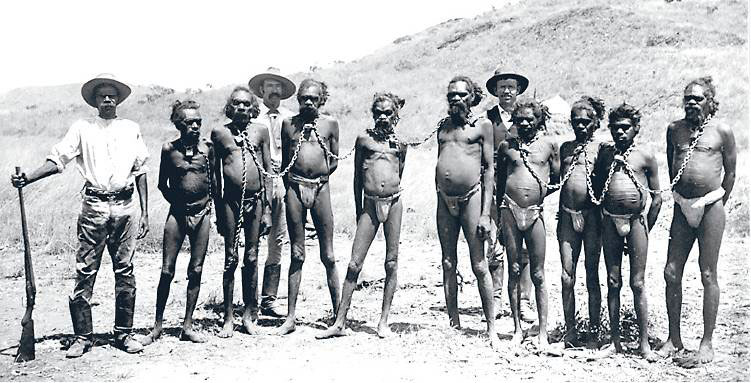
In a way, there is a lack of political nous to the recommendations. The recommendations are ambitiously pitched, though so many similar reports have been ignored. Yet in a way, this isn’t such a bad thing. Human rights reports can be regarded as a kind of resource for activists to use. This report, like so many others, sets out clearly that there is a serious problem. Fundamentally, prisons are under-invested with the resources to care for prisoners. For this to change, public awareness must be raised, to the point that people desire that prisoners be treated more humanely.
The problem with this is that large sections of the public, including much progressive opinion, want criminals to be treated vengefully. There is satisfaction when a murderer, a rapist, a terrorist or a paedophile is convicted of a heinous crime, and there is an expectation that they will be severely punished. Clamouring for prisons to be more humane will clash with those who want to see harsher sentencing and punishment for, say, rapists.
Ultimately, for these things to change, and people in prison to be treated more humanely, there will need to be a large-scale shift, in the sense of an Australia-wide shift, against treating prisoners badly and punitively. This is a political question, and until it is more widely grappled with, it will not be resolved, because it will take a great deal of pressure to convince Australian governments, state and federal, to treat prisoners more humanely.
What this means now is stories like those told previously. A man with a psychosocial disability being held in solitary confinement for 19 years, because the prison can’t control his behaviour. An Aboriginal man being forced to wear a nappy everyday, because the toilet is so rarely made accessible to him. This is the degrading cruelty our current system delivers.
It has been said that societies should be judged by how they treat their most vulnerable. These reports have provided a sturdy basis for judging Australia.
For the foreseeable future, this is our country.
You can support Michael’s work by subscribing to New Matilda here, donating via the Paypal button below, or sharing this story on social media and with friends and family.
Donate To New Matilda
New Matilda is a small, independent media outlet. We survive through reader contributions, and never losing a lawsuit. If you got something from this article, giving something back helps us to continue speaking truth to power. Every little bit counts.

